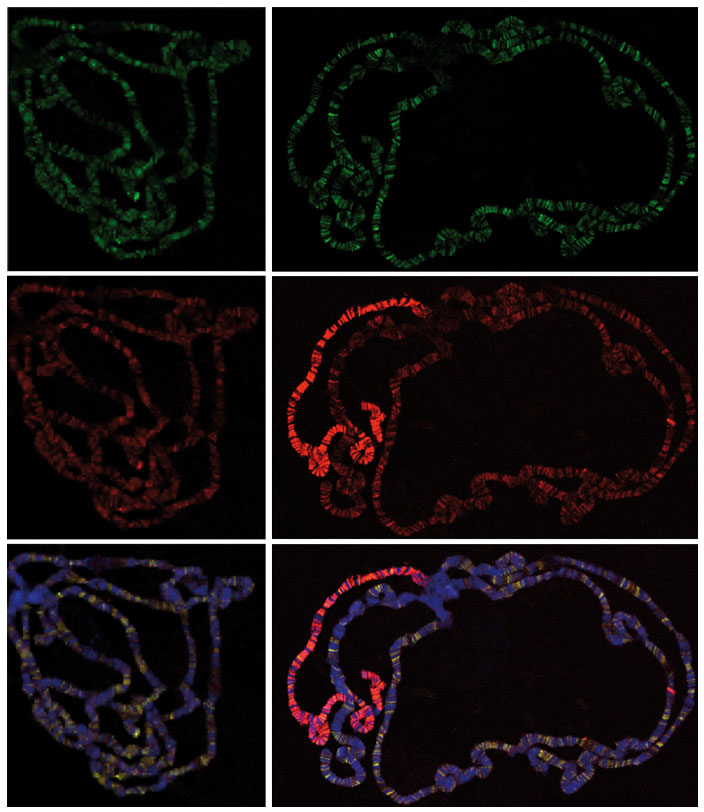A life-changing partnership
New regulatory complex turning on genes

Researchers from the European Molecular Biology Laboratory (EMBL) in Heidelberg, Germany, and the Max-Planck Institute of Immunobiology Freiburg have identified a novel protein complex that regulates around 4000 genes in the fruit fly Drosophila and likely plays an important role in mammals, too. Published today in Molecular Cell, their findings explain how another regulatory protein can lead a double life.
“This new complex seems to be one of the major regulatory complexes both in Drosophila and in mammals,” says Asifa Akhtar, former EMBL group leader and now at the Max-Planck Institute of Immunobiology in Freiburg, Germany, who led the study: “Without it, flies die early in embryonic development.”
The absence of the newly found complex causes early embryonic death of both males and females, so Akhtar and colleagues named it Non-Specific Lethal (NSL), in contrast to a previously known complex called Male-Specific Lethal (MSL). The MSL complex enables males to double the expression of the genes in their single X chromosome – a process called dosage compensation – by binding to the body of those genes together with a protein called MOF. Thus, male flies are able to compensate for the fact that they have only one X chromosome, while females have two. But MOF leads a double life: it also binds to the promoter regions of genes on all chromosomes, in both sexes.
Akhtar and colleagues discovered that the NSL complex decorates all chromosomes in both sexes. They also observed that the NSL complex helps MOF to bind to promoters and thereby plays an important role in determining the life MOF will lead. If it partners up with NSL, MOF turns on genes in all chromosomes. If it interacts with MSL instead, it binds to genes on the males’ X chromosome, playing its role in dosage compensation. Interestingly, NSL indirectly drives this aspect of MOF function too, by acting together with MOF to turn on the genes whose output will then be increased by dosage compensation.
“These proteins have been conserved throughout evolution – they exist not only in fruit flies but in mammals too, meaning that everything we have discovered in flies has implications for humans and other mammals, which we’d like to investigate next,” Akhtar concludes. Since MOF is frequently down-regulated in cancers, comparing how the NSL complex behaves in healthy tissues and in tumours is especially relevant.



